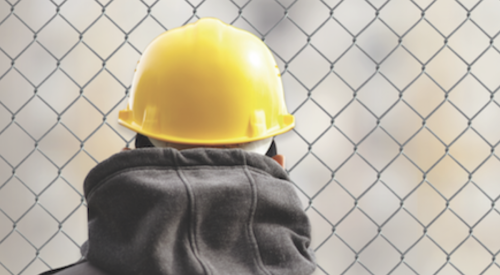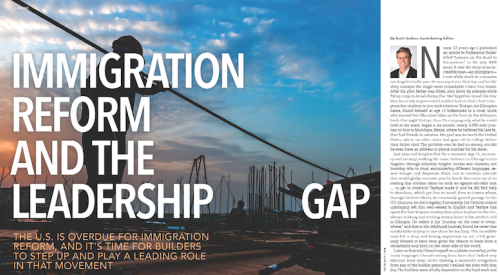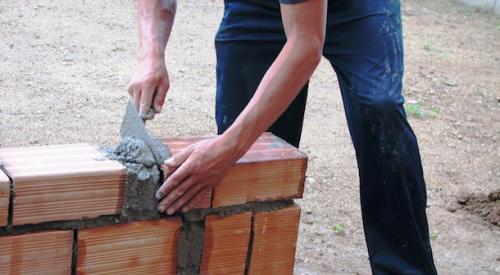We've watched a "perfect storm" brew in the Bush/Gore election fiasco and have seen it recently with Hurricane Katrina — two unusually big messes. But could the term soon apply to home building?
Our industry faces today perhaps the strangest, most conflicting set of economic circumstances imaginable. Overall, the economy is growing at a healthy clip and, save a couple of places like my home state of Michigan, employment is up and economic indicators look good. That's countered, however, with steadily rising interest rates and investors not just fleeing the hot markets but dumping houses.
In past downturns, which used to occur every seven years or so, we knew builders could count on less expensive labor. But we skipped the last housing downturn, and this one isn't behaving properly. We may be about to see exactly the opposite thing happen: a tremendous shortage of labor supply with the accompanying increase in labor cost.
Before you cry foul, just ponder the situation for a moment. We know that both slow sales volume and falling prices will produce lower margins, and most of you are experiencing one or both. It goes without saying that labor shortages mean higher labor prices and lower margins. Margin pressure from both ends at once? Can that really happen? If our current political climate doesn't change, it just might, and then you will have it: the home building industry's very own version of the perfect storm.
Trouble BrewsIf you live anywhere in the Southwest or in a large city, you may already know how this may come about. The clamoring for tough, strict, highly punitive immigration laws has reached a fever pitch, and our politicians are listening — and responding.
Think about it. With 100 percent of the House and one-third of the Senate up for reelection this fall, would you expect anything else? Throw in about half of the governors plus those who hold state congressional office and you have a whole lot of folks on the public dole looking for an issue they can get everyone worked up about without taking much risk. Immigration policy is that issue.
The brutal reality of our current system is that elected officials who propose serious solutions for critical national issues such as Social Security, Medicare or energy policy are guaranteed to make a whole lot of people hysterically angry. Hysterically angry folks are great fodder for our insatiable 24/7 news channels and blogs, and they get a lot of airtime. This is not conducive to reelection. To be serious would require a politician to state exactly who is going to get hurt and how much it would cost — political suicide. Better to avoid the tough issues and either tell 'em what they want to hear or choose something very safe. Hence the resurrection of the anti-flag-burning amendment, even though there was but one documented case of flag burning in the United States in all of 2005!
Unlike flag burning, which doesn't get all that much traction, going after illegal immigrants is perfect. How easy it is to paint the great and presumed illiterate masses of illegals as undeserving interlopers of all things truly American?
According to the non-partisan Pew Research Foundation, in an April report, there are approximately 12 million illegal immigrants working in the U.S. now, 21 percent who are employed in construction. That's 2.5 million, making up 14 percent of all construction workers. It must be noted, though, that many groups further out on the right wing of the spectrum generally double these numbers. Still, it means that a lot of people and a lot of jobs, however you count.
Our IndustryUntil fairly recently, most employers generally and conveniently overlooked the fact so many of their immigrant worker "numbers don't match," but now Homeland Security is rumored to be in the process of changing the game. The talk is that the department may declare anyone without proper citizenship, a green card or a work permit to be immediately fired and reported.
"So why not?" you ask. Let's not debate fairness, legality or the fact that most research says we pull the workers toward the U.S. with the lure of steady work otherwise left unfilled; let's just talk the reality of the impact on our industry.
Last week I heard about a drywall contractor in a large market with around 800 employees. Less than 10 percent of his workers have "numbers that match." So fire them and replace them with those whose numbers are good, right? Well, he has a problem with that. "I haven't had a single Anglo apply to work for me in more than 20 years!" In short, if we start enforcing this, he closes up shop. Period. So will many other trade contractors in the industry and apparently far more than we might imagine.
I asked a builder friend from Chicago what percent of the immigrant workers on his sites he believes are legal. He quickly stated that every one of his subcontractors signs contracts his company requires stating all workers are legal. But then he added that if you sit down and have a beer with the contractors, you'll find out that it's not so — many of their "numbers don't match." It varies by trade, he said, but when I asked for his best estimate, he said, "about 50 percent."
Possible SolutionsWhat's the real number? It varies greatly by market, but somewhere between 15 percent and 30 percent of our industry labor pool is illegal. If the House version of the new immigration law passes the Senate and serious enforcement followed, home building would be absolutely devastated — as would other industries. Ironically, illegal workers is one issue in which President Bush has a workable plan, yet it is his own party pushing hardest, for the "make 'em all felons and ship 'em back to where they came from" approach. Many Democrats are right there with the Republicans on this; after all, they want to be reelected, too.
The politicians are responding to two huge pools of ignorance. First is their own, as they are not considering the disastrous implications and costs of a blanket felon proclamation. The second is that of the public who responds just as most of us would to this survey question: do you think illegal immigrants should be allowed to exercise all rights of an American citizen, including education, unemployment and healthcare, paid for by your tax dollars?
Short term, we can hope that Congress does what it does best: get tied up in its perennially partisan underwear and do nothing. But there does need to be a solution and a plan, and in this case, President Bush is at least pointing us in the right direction. There needs to be a guest worker program, and there needs to be an amnesty plan. Without both, our economy will suffer, and the one that will take the biggest hit of all is home building. Shrinking demand and/or shrinking prices coupled with increasing labor costs are a formula for disaster. The perfect storm is forming, and something has to be done.
This time we'd better all get busy and start writing our Congressman because our livelihoods are at stake. Home building will inevitably recover, and the demand for housing isn't going away; but what we're talking about is a one- or two-year recovery versus a five- or seven-year recovery. We have a choice: a brief rain shower or the storm of the century.
Better pick up that pen today.
| Author Information |
| Scott Sedam is president of TrueNorth Development, a nationwide consulting and training firm focused on quality, process improvement and organizational development. He can be reached at scott@truen.com. |












